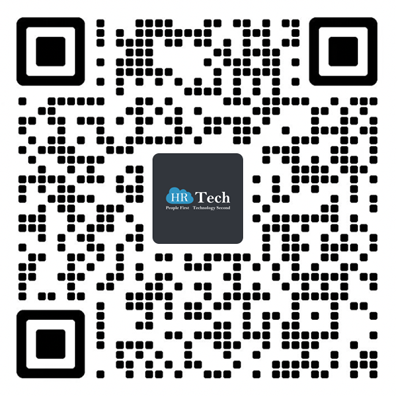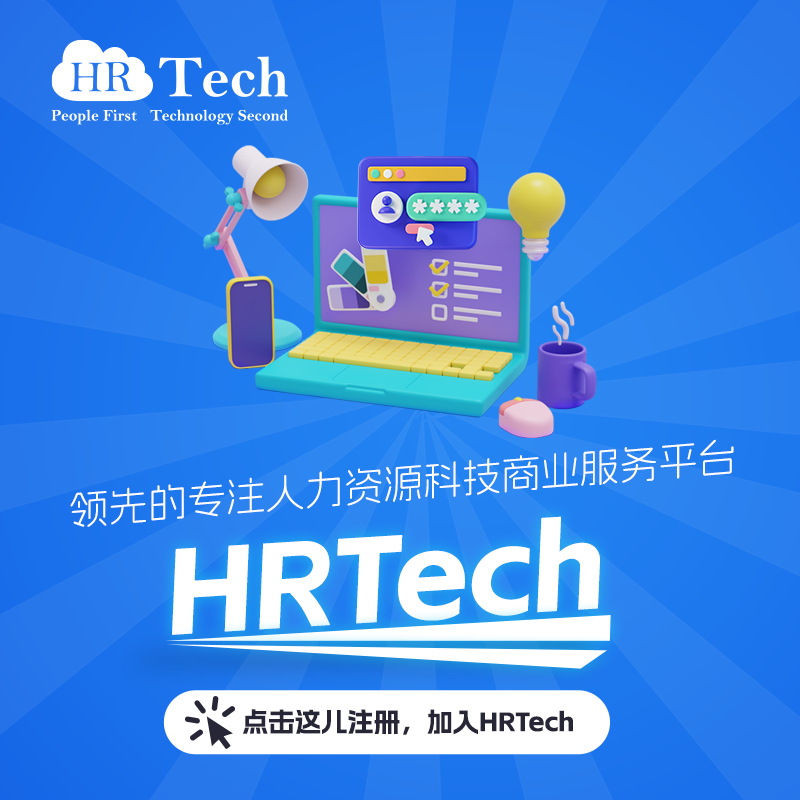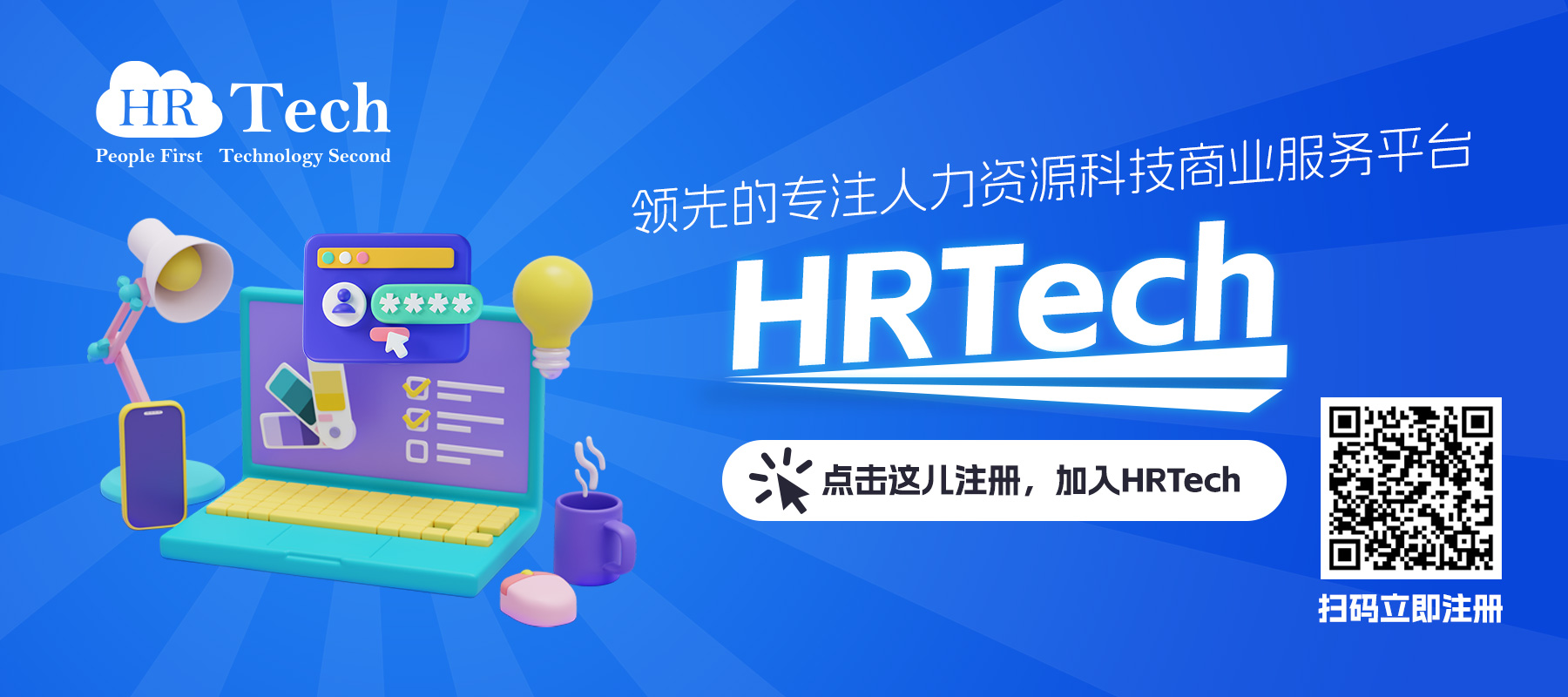-
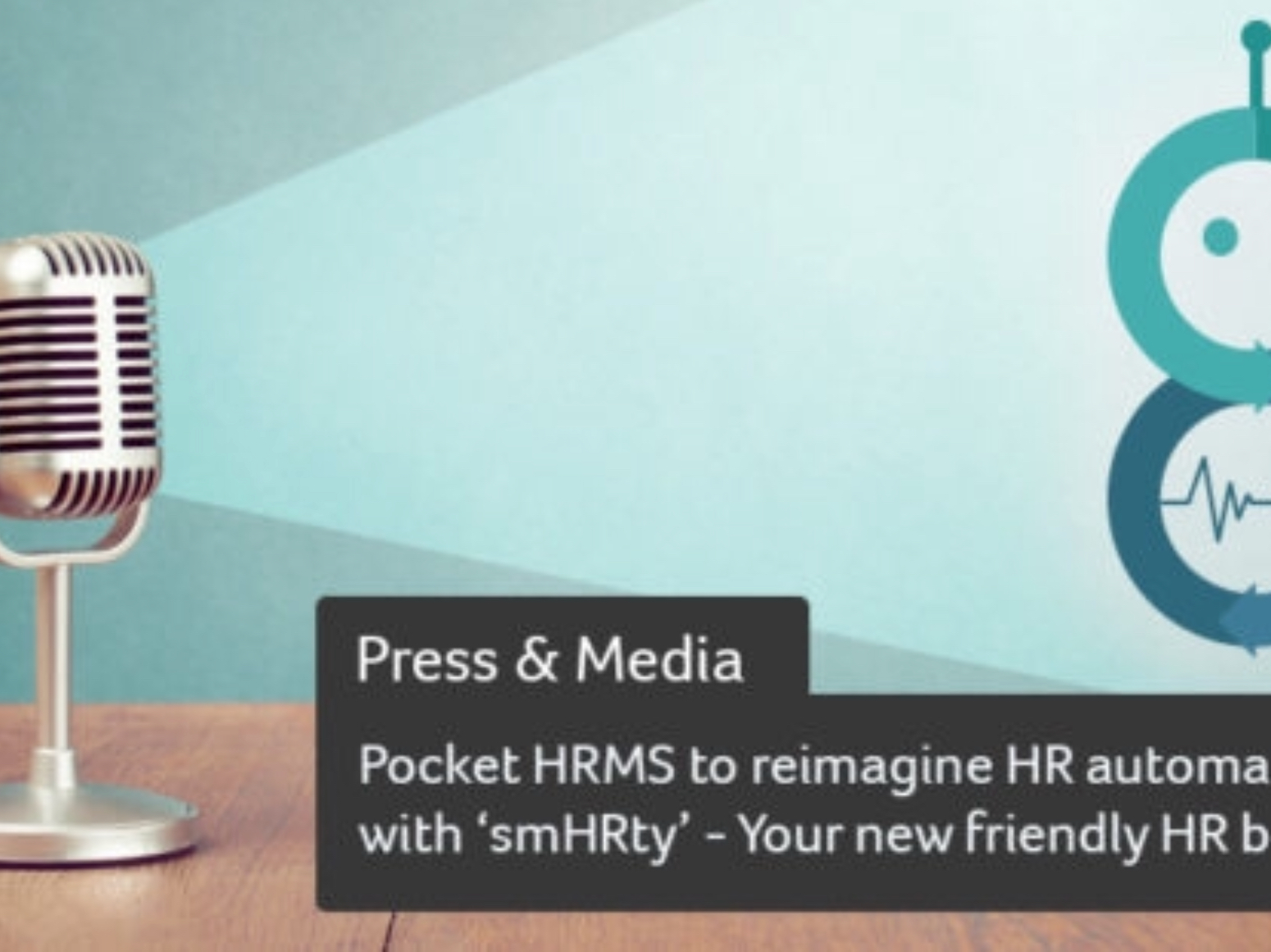 头条
头条
掌上HR管理系统用'smHRty'重塑人力资源自动化 - 一种新的友好型HR机器人
来源| MUMBAI
现在已经是2018年了。掌上人力资源管理系统对人力资源部门来说是个好消息。
之前被称为Pocket HCM的Pocket HRMS在本周早些时候推出'smHRty'(发音为Smarty),旨在重新设计人力资源自动化。
smHRty是一款AI聊天机器人,可作为员工的HR一级服务台,从而将人力资源人员从大量的管理工作中解放出来,并让他们专注于其他关键性战略任务。
现在已经是2018年,随着业务生态系统和技术的不断发展,人力资源的动态正在发生巨大的变化。
随着其他流程、技术和云计算取得了巨大的飞跃,人力资源部门必须拥抱我们今天提供的技术优势。从招聘到退休,许多公司仍然在人工处理HR的所有关键流程。
我们相信新推出的Pocket HRMS和HR聊天机器人smHRty将成为受每个人欢迎的举措。
“我们将考虑把smHRty作为处理所有人力资源部门互动与查询的第一级延伸手段,从而让人力资源部门专注于更重要的事情”,Sage Software Solutions Pvt Ltd.的首席执行官Jitendra Somani先生说道。
smHRty使用智能机器学习算法回答员工向HR提出的一些最常见的问题。交互式聊天机器人可以像人一样工作,像真人一样有趣和平易近人。无论是检查假期余额,税务细节,工资单或个人详细信息,smHRty都将帮助员工查询大部分基本的人力资源相关文件。
“由于smHRty使用机器学习和人工智能技术,它将自我学习,并随着时间的推移自我更新,以更好的方式为员工服务,”Jitendra Somani先生补充说。
smHRty的推出为Pocket HRMS在人力资源自动化方面提供了优势。掌上HR管理系统的座右铭仍然不变,即“从招聘到退休的创新”,这反映了品牌的坚定信念。
这仍然是基于SaaS的定价和最新技术的最经济实惠的HRMS解决方案。
关于Pocket HRMS
掌上人力资源管理系统,以前称为口袋HR管理系统,是全国领先的基于云计算的人力资源软件,拥有最先进的开发和支持中心。现在它配备了一个内置的智能HR聊天机器人,负责日常的人力资源任务。
掌上人力资源管理系统通过解决一系列人力资源管理问题来增强企业实力。作为云人力资源领域中值得信赖的名称,Pocket HRMS提供强大的模块来管理重要的人力资源运营。
-
 头条
头条
HR沙龙十五周年庆典论坛精彩落幕 人力资源未来深度展望(多图)HRTechChina 协办
世界之大,方寸之间
沙龙翘楚,交往而现。
2018年6月6日,HR沙龙十五周年庆典论坛在上海紫金山酒店隆重举办。本次活动推陈出新,牢牢把握现下人力资源行业痛点。主办方特别邀请多位资深人力资源大咖,为现场的500多名观众带来了精彩的演讲。本次论坛得到了业内知名品牌的大力支持:仁云HRO、易路软件、AMPOS、道生智、优面宝、蓝白律师事务所、劳达等机构,再次表示特别的感谢!
在本次HR沙龙上,HR沙龙创始人冬瓜先生为大家带来精彩的开幕致辞,活跃了现场的气氛。冬瓜先生回顾了HR沙龙十五年来的发展历程,阐述了他对人力资源技术的未来展望,为今天的会议创造了良好的开端。
开场的分享嘉宾是资深人力资源大咖钱国新先生。钱先生带来《“人才资本主义”来临了!》的主题演讲,重点介绍了未来的组织人才和HR的工作职能,以及人力资源管理的趋势。由于劳动力的年龄结构的重大改变,HR部门的人才招聘任务也越来越重。钱先生提出了“人才资本主义”这个新概念,对于HR同仁的未来工作是非常有意义的。
接下来的嘉宾是道生智合伙人张凯先生,他带来了《破解人才招聘的难点》的主题演讲。张先生首先简单介绍了猎头的职能范围,然后逐步分析了招聘人才的难点和解决方案,并举出了很多翔实的例子。现场的HR同仁表示收获很多。
紧随其后分享的是来自蓝白律师事务所的首席合伙人陆胤先生。陆先生的主题演讲是《面向未来的员工关系管理》。他首先提出了问题:未来的员工关系还会是劳动关系?在演讲中,从成千上万的公开判例中精心挑选出4个互联网公司的新型劳动诉讼案例。从法律角度向大家展现了互联网用工与以往的劳动关系的差别。陆先生最后谈到,未来的新型公司的员工关系不会是灰色地带,新时代缺的不是人才,是合规。
在三位嘉宾精彩的主题演讲之后,紧接着便是圆桌高端对话。
资深职场导师Elaine Yuk女士作为主持嘉宾,和其他四位嘉宾关于Futur of HR的话题展开了激烈的深度讨论。 并且他们回答了现场的不少提问,从技术角度为观众答疑解惑。
圆桌对话结束后,嘉宾和现场观众纷纷去午餐区用餐休息,互相交流。
下午的主持嘉宾是资深人才发展大咖季东来先生。季先生主持了下午的两个环节:未来的HR论坛和人才发展论坛。
首先是未来的HR论坛。
高中俊先生,作为下午的开场演讲嘉宾,向我们分享了名为《迎着未来,做一个幸福的HR》的主题演讲。他引用了很多具体的案例,生动讲解了未来的HR如何获得工作成就感。
紧接着薪智产品总监李博先生带来《透过案例解析薪酬体系设计流行趋势》的主题演讲。作为致力于薪酬体系的公司的产品总监,李博先生也举用了很多行业内部的案例,从薪酬体系这个角度向大家展现了人力资源行业的另一面。
在李博先生结束演讲后,华夏信财的人力规划总监张晓鸣先生。他为我们带来主题为《教你五招激活企业文化》的演讲。张先生对于企业文化的建立颇具心得,深入浅出地阐述了激活企业文化的技巧与方法。
论坛进入了休息时间。现场氛围良好,大家小声交流着刚才的收获。休息时间结束,便是论坛的最后一个环节:人才发展论坛。
科石咨询首席顾问杨冰先生发表了《人力资源未来发展模型》的演讲。杨先生以通俗易懂的例子为大家展现了人力资源的未来发展图景。
然后是高通公司(亚太区)人才与组织发展总监陈伟雄先生,他的演讲题目是《我们如何做人才发展》。陈伟雄先生全程用英文演讲,由他的好友同时也是本场嘉宾的Daisy女士同声传译。陈先生的演讲引用了很多海外的优秀人力资源成果,给予了国内HR同仁很多借鉴的经验。
主持人嘉宾季东来先生发表了最后一个单人主题演讲:组织动力与团体关系。季东来先生在极短的时间内向大家阐述了他这两年的学习收获,为我们带来了新型前沿的理论。
然后便进入了最后的炉边对谈:人才发展的趋势和未来。参与炉边对谈的重量级嘉宾有:洲际&英迪格酒店培训总监Lilian Xia女士,高通公司(亚太区)人才与组织发展总监陈伟雄先生、华夏信财的人才规划总监张晓鸣先生、许菊晏女士和主持嘉宾资深人才发展大咖季东来先生。谈话氛围友好亲切, 嘉宾们回答了现场很多有挑战性的人力资源问题,例如民营企业与外企合资后的文化冲突。
炉边对谈结束后,论坛以嘉宾合影的形式圆满结束。
以上便是HR沙龙十五周年庆典论坛的全部内容。此次论坛摄影图片均已上传到云端,你可以点击此处链接查收,我们也将提供高清原图下载,欢迎查看!
最后感谢HR沙龙的赞助合作伙伴:仁云、道生智、蓝白律师事务所、Ampos、易路软件,优面宝,劳达。感谢你们的大力支持。
感谢到场的志愿者,你们为论坛的顺利举行做出了重要的贡献。
感谢到场的观众,你们的虚心好学在未来一定会有相应的回报。
HR沙龙和兄弟品牌HRTechChina在日后还会定期举办很多活动,希望在下个月的招聘科技论坛次与各位相遇。
。
-
 头条
头条
HR入驻Youtube?用趣味视频传播人力资源知识
文| léonor lumineau
来源| Le Monde Economie
如何激励管理人员,与员工沟通,淡化问题,通过趣味视频重新审视工作世界
我们应该招募怪人吗?
你在工作中感觉如何?
“任何人都可以成为企业家吗?
2016年,TalentSoft软件公司的联合创始人Alexandre Pachulski推出了一个致力于职场的YouTube频道,这个话题在网络视频平台中并不常见。
而这个频道用轻松的音色和动态剪辑的短片来展现了职场生活。
和他一样,近年来,其他人力资源专家也投入社交网络。
包括企业幽默文化专家MichèleCôme和她的ComeInc频道;
JérémyCoron和他的频道“让我们一起工作吧! ”;
比利时人力资源咨询公司主持人Thierry Croix和与公司同名的Go 2 Next Levels频道;
加拿大人力资源专家StéphaneSimard“以更加严肃的口气说道”;
还有社交和管理创新专家Benjamin Chaminade。
网络视频的优点很多。
首先,它可以推广与人力资源相关的复杂话题,并使非专业受众,以员工的角度,来关心这些问题。
YouTube用户对科学这种复杂深奥的话题的广泛关注度证明了这一点。
“那么,人力资源的话题为什么不可以?”Thierry Croix问道。
民主化HR
目前,他们仍然是少数,他们的节目像个笑话。
到 1月底,让我们开始工作吧!的订阅数超过了1400。但是Go 2 Next Levels仍然低于600。
“我们的订阅者有一个特殊的形象:他们以专业的角度观看我们的视频,在社交网络上分享很少,另外,许多公司的网络是禁止访问YouTube或Facebook的。
而当员工晚上回来时,他们还有别的事情要做,就不会去看我们的视频了”,Thierry Croix说。
这并不妨碍他相信Go 2 Next Levels的潜力。
他们的最新视频与人工智能招聘有关。
这些Youtubeurs RH的目标很简单:将人力资源民主化。
“这些话题通常是由专家来解释的,而且会涉及到所有方面的知识。通常大众认为人力资源经理负责招聘,薪资和解雇,除此之外就没有更深入的认识了”, 招聘主管JérémyCoron对此表示遗憾,并希望这些内容丰富的网络视频 “ 可以让人们通过观看移动端的视频,便可以恢复他们的职业生涯。”
其他人使用他们的渠道作为营销工具。
MichèleCôme就是这种情况,他主张在商业中使用幽默进行交流:“我的视频是吸引力的产物,另一种宣传方式,说服我的未来客户,让人们对商业相关主题感到捧腹大笑。”
另类音调
Go 2 Next Levels方面也有同样的意图,它提供更传统的人力资源咨询服务。
“这比枯燥的博客文章要好得多,我们的视频展现了我们的思维状态,也有助于向人力资源经理展示视频媒体在内部使用的潜力,”Thierry Croix解释道。
对于Alexandre Pachulski,“网络视频的优势在于它能够使用真实的参考来解决复杂的管理问题”。
后者喜欢嵌入电影场景来说明概念。
在她的视频中,“她的工作描述是?”
他使用Django Unchained和华尔街狼的场景解释演员的选择是因为他们对应角色,但导演希望他们把他们的“标记”放在他们自己身上。
对他而言,网络的短片已经在日常生活中广泛地被视为有用的目的,它们在工作中占有一席之地,其中包括教育学和意识的目标。
在YouTube上,这种古怪的语气似乎是成功的关键之一。 “可以在网络视频中使用的幽默可以增加观众对文章的影响,也可以淡化某些主题,”MichèleCôme说。
在致力于工作世界的情报视频的情况下,挑战是要放松,同时保持严肃。
-
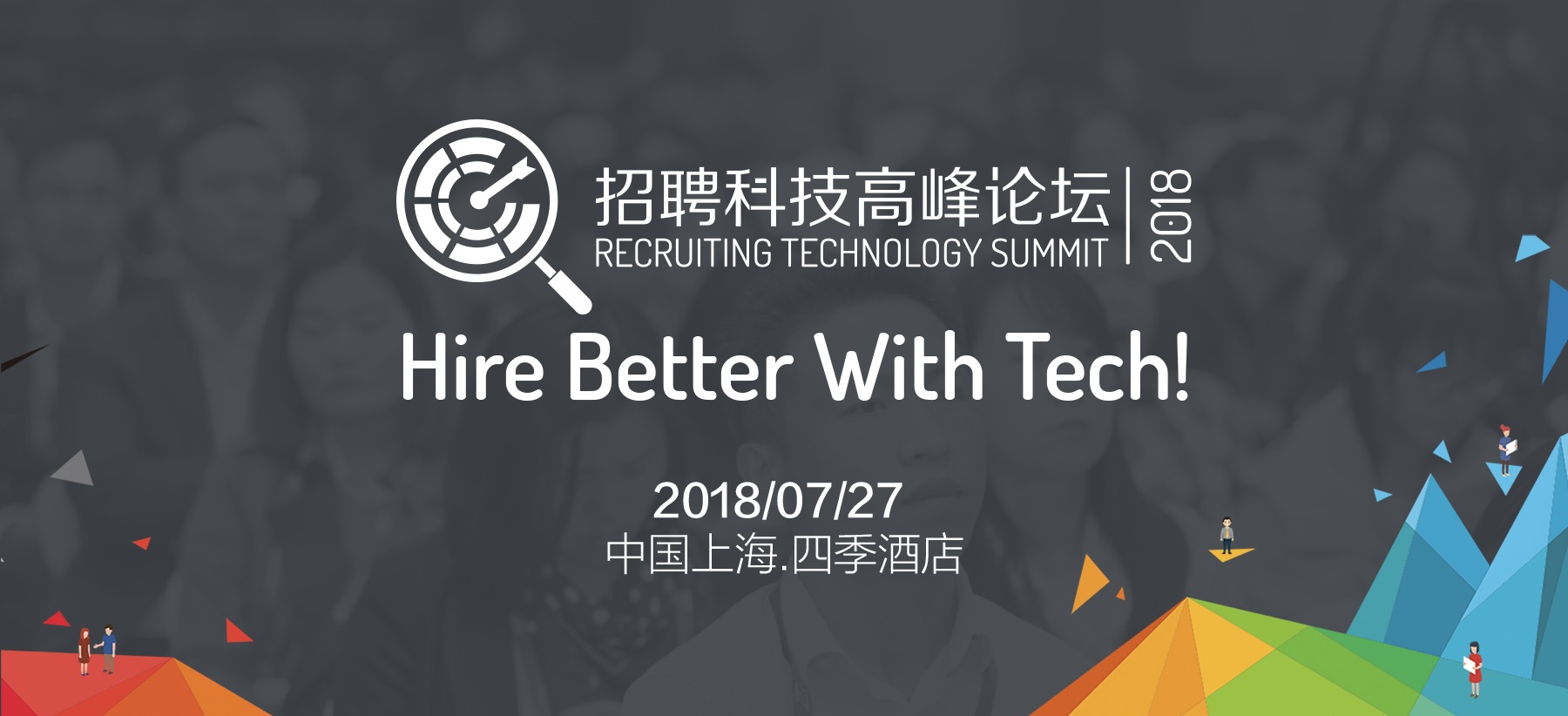 头条
头条
重磅发布:2018招聘科技论坛将于7月27日在上海四季酒店举行,欢迎参加!
招聘科技论坛 Recruiting Technology Summit
时间:2018年7月27日 9:00-17:00
地点:上海四季酒店(威海路500号)
规模:1000+ 招聘科技达人
招聘工作对于企业来讲不言而喻是相当重要,如何及时找到优秀的适合的人才是我们招聘工作者的核心工作。
科技的快速发展带来的不仅仅是信息的快速膨胀也给我们招聘工作带来的巨大的机遇和挑战,如何更好的使用技术手段提升工作质量成为我们不能不面对的工作!工欲善其事必先利其器!
招聘科技论坛就是这样一场关于招聘科技的专业盛会!
是时候打开企业的招聘百宝箱,检查下是否已经准备好获取人才过程中的百般工具了?
加入招聘科技论坛,可以收获人才获取相关的最佳招聘科技实践和科技利器!(招聘渠道、ATS、人才测评、考试、校园招聘、海外招聘、面试管理、背景调查、智能招聘面试、猎头平台、猎头软件、雇主品牌、电子签约、入职管理、候选人体验等等);
向杰出企业的招聘领袖、专家,畅销书作家们学习即学即用的招聘技巧、策略、案例,更好的掌握招聘科技工具!
招聘科技论坛核心内容分为2大部分: Talent Acquisition(sourcing) 人才获取 、Talent Assessment 人才评估。
论坛内容丰富多样,为大家带来更多高品质的分享,我们特别把分享的时间颗粒度设置为:20分钟和30分钟!加大论坛容量!
报名抢票:http://umian.me/JDZJp2
马上免费疯抢1000张招聘科技达人的入场券吧!
参与转发分享邀请更多招聘达人参会
现场可领取属于你的 招聘科技达人徽章一枚
官方网站:http://event.hrtechchina.com/727/
赞助参展:
联系我们:Annie 获取详细合作方案
联系电话:18621292818(同微信号)
Email:annie@hrtechchina.com
-
 头条
头条
员工体验:HR部门需要走得更远
文| Josh Bersin
现在,“改善员工体验”受到了业界巨大的关注。公司致力于提高生产力,员工关心工作压力和福祉,工作环境变得比以往任何时候都更加复杂和令人困惑。
我们刚刚在德勤2018年全球人力资本趋势报告中研究了这个话题。应该指出的是,员工更多地使用通讯工具并不意味着组织生产力的提高。
实际上,尽管71%的受访者认为这些新工具可以提高他们的个人生产力,但有47%的受访者对这些工具是否真正提高了整体生产力表示怀疑。
为了应对这些新的压力,组织正在努力改善员工体验,比如购买一些现有的产品。
今天,几乎所有HR技术供应商和咨询机构都在赞扬设计思维,员工之旅地图以及德勤所谓的“重要时刻”,以找出HR可以让工作/生活更轻松平衡的方式。
例如,不要走流程式似的思考:“我们需要在第一天雇佣新员工?”
HR部门应该从经验角度思考:“我们想让新员工的第一天成为什么样子?”
这个新的焦点已经开始推动一些结果。
各公司正在制定比以往任何时候都更具员工体验的入职培训计划。
它们有新的系统可以帮助员工迁移和迁移。
整个学习和发展行业正在扭转局面,建立微型学习,以便人们可以快速找到他们需要学习的内容,而不是一天只需离开办公室参加培训。
我们最近遇到了一家大型全球制造商,该制造商现在为每个国家的员工提供完全不同的员工体验计划,因为各地的工作条件,医疗保健计划和工作角色各不相同。
所有这些都是好事。但让我补充一句:建立真正的“不可抗拒”的员工体验远远超出了人力资源部可以独自完成的范畴。
形成一个高生产力,健康和有吸引力的工作生活意味着改善工作设计,重点关注设施和工作经验,创造包容和成长文化,以及真正关心的招聘经理。
所有这些元素必须汇集在一起,同时具有竞争优势,以帮助提高工作效率和回报。
在我研究这个主题并与世界各地的人力资源领导者交谈时,我发现的是,人力资源部门根本无法单独做到这一点。
我从早上醒来开始工作,首先打开电脑;在我预订旅行和处理文件费用时,我感觉很差;当我必须按照安全合规的方式进入建筑物时,我感觉很不好。
事实上,我在工作中的每时每刻(在办公室并不总是发生),偶尔能感受到员工体验,一旦我感到沮丧,官僚化或慢慢地脱节,变得没有生产力,我便想知道我的努力是否是值得的。
我相信员工体验是由人力资源部门负责,并与IT部门一起工作的。
单单在人力资源部门,我们不可能处理所有工作中重要的时刻,因为其中很多都与技术相关。
但我也认为这也延伸到其他业务领域。
财务和运营团队是否允许我无缝存档费用帐户?
销售代表是否让我在不填写大量表格的情况下服务客户并销售?
安全人员是否允许我使用安全可靠且易于使用的徽章和移动访问?
后勤人员给我足够的光线,食物和空间来完成设施吗?
我们人力资源部门必须摆脱这样的想法:我们只负责员工体验。
我们不能。我们所能做的就是“策划”策略,研究并收集关于工作中的错误的数据,并组建一个多学科团队,逐一将问题逐一解决。
我们处于独一无二的地位,因为我们对所有这些问题都要考虑。
所以我们作为赞助商和领导者的角色至关重要。
考虑一下你的员工体验计划:
它是否以设计为导向,你是否拥有所有合适的利益相关者?
如果你把它们放在一起,我知道你真的可以对你的组织产生影响,更多地了解贵公司的工作方式,并以更激动人心的方式增加价值。
以上内容由HRTechChina AI编译完成,仅供参考
-
 头条
头条
首届人力资源区块链中国论坛圆满落幕 吹响HR行业未来的前哨(附录丰富的HR区块链知识)
2018年5月25日,首届人力资源区块链中国论坛在上海紫金山酒店隆重举办。本次论坛由HRTechain主办,大咖云集,线上与线下实时互动,会议内容由多渠道平台推送。
区块链的火爆毋容置疑,从比特币价格的暴涨开始,币圈和链圈的概念就不断的冲击着人们的神经。币(链)圈一天,人间一年。
区块链技术早已不是一项新鲜的技术,但今年区块链的火爆现象更加突出了技术与时代发展的需求。
人力资源领域对区块链技术有着天然的亲切感。从员工招聘,工资发放,智能合约,零工经济,福利奖励,背景审查,学历证明等各个方面都可以看出两者未来的紧密联系。
作为首届人力资源区块链论坛的主办方,HRTechain邀请了区块链中的超级大咖与行业应用的实践者们,一起给大家分享交流区块链在人力资源中的场景和应用,以及未来的机会和挑战。
开场的分享嘉宾是美国ArcBlock的CMO陈俊先生,他带来了“区块链技术之我见”的主题演讲。陈俊先生主要谈到了他对区块链技术的思考,并介绍了区块链的发展与应用的关键要点。
接着是HRTechChina 顾问Gawain带来的主题为人力资源行业中的区块链机会与挑战的演讲。Gawain主要谈到了区块链技术的人力资源应用落地场景,并以丰富的案例加以佐证,从应用领域最迅速的招聘到薪酬国际支付,以及福利保险等区块链解决方案,也跟大家谈到一些假的区块链人力资源项目。
在两位嘉宾精彩的主题演讲之后,主办方特别邀请了来自EDC教育链的陆游先生,他为大家带来了6分钟的精彩绝伦的人力资源区块链项目PITCH环节。
PITCH环节结束后,中钞区块链技术研究院院长张一峰先生为大家分享了区块链技术的现状和相关知识。张一峰先生作为数字货币和区块链领域专家,深入浅出地向大家讲解了区块链的宏观理论。
最后是多位大咖共同参与的主题为“ 区块链在人力资源未来”的圆桌对话 。在短短不到一个小时的时间里,几位嘉宾关于区块链技术在人力资源的应用与发展这个话题,进行了激烈的思想碰撞和观点共享,为论坛不仅带来了最具前沿趋势的观点,更有多维度的思考方式的启发。
在论坛的整个过程中,参会的100多名观众都保持着高涨的热情与好奇心。虽然很多在场的HR对区块链技术还停留在认识阶段,甚至有人打趣道“像是管理系的学生在计算机系上了一堂专业课”,但是大家会后纷纷表示对区块链技术如何落地应用还待观察。但是HR如果不对这一新技术保持关注,迟早会在人力资源行业中落伍,以致被淘汰。
虽然区块链技术在人力资源行业还没有实质性的、真正能带来革命的应用落地产品,假以时日,区块链技术定成为最耐用,最值得信赖的人造产物,并将在人力资源领域产生深刻的影响。
截至目前,由HRTechain主办的首届人力资源区块链论坛取得了超过预期的成功。这鼓励我们在日后也将定期举办人力资源区块链论坛,为中国人力资源同仁和企业管理者们搭建一个现场沟通、交流区块链技术在人力资源领域如何应用落地的优秀平台。
HRTechChina将始终保持人为本(People First)的不变初心,努力推进区块链技术在人力资源领域的开发与落地。
鉴于大家对区块链技术在人力资源的应用这个话题的热切关注,我们将根据应用场景分类列出网站里区块链技术的相关文章。希望能在各位HR同仁的学习进程中提供微薄的帮助。
附录:
区块链知识介绍
http://www.hrtechchina.com/20990.html
硬知识:王建硕谈链表,哈希,挖矿等,智能合约,代币(Token)等 - 区块链技术学习笔记
http://www.hrtechchina.com/21461.html
区块链制度经济学:从历史到未来
http://www.hrtechchina.com/21203.html
互联网金融博物馆关于区块链和ICO,Token,比特币的分享
http://www.hrtechchina.com/21197.html
深度好文!区块链的未来,远超你想象!
http://www.hrtechchina.com/20489.html
区块链终极之战:众神抢夺“主链”,这里将诞生下一个苹果和微软?
http://www.hrtechchina.com/19973.html
区块链是什么,如何简单易懂地介绍区块链?--截至目前最好最前面的一篇介绍!
http://www.hrtechchina.com/20362.html
深度好文,帮你进一步了解-区块链的应用:共识的下一个100年
综合(同时提到好几个方面)
http://www.hrtechchina.com/21820.html
区块链技术将会彻底颠覆我们下一代的工作环境
http://www.hrtechchina.com/21618.html
今年将有3项技术趋势会打乱人力资源部门
http://www.hrtechchina.com/21600.html
人力资源区块链:挑战,应用和工作的未来
http://www.hrtechchina.com/21329.html
HR是否准备好区块链技术
http://www.hrtechchina.com/21277.html
区块链技术将对人力资源产生重大影响!
http://www.hrtechchina.com/20761.html
人工智能、区块链和云,他们如何影响人力资源?
人才管理/企业管理
http://www.hrtechchina.com/21609.html
区块链和HR:为什么它可以改善员工奖励和认可度
http://www.hrtechchina.com/18794.html
帮助企业维护分发授权签名,英国区块链初创公司Cygnetise获100万英镑种子轮融资
http://www.hrtechchina.com/17222.html
Submittable为企业提供文档管理解决方案,获500万美元融资
薪资
http://www.hrtechchina.com/21304.html
区块链在薪资系统中的应用讨论,ADP已经在部署开发
http://www.hrtechchina.com/14261.html
区块链会成为我们获得工作报酬的新方式吗?
招聘
-简历认证/职场信用
http://www.hrtechchina.com/21733.html
如何使用区块链技术进行招聘?
http://www.hrtechchina.com/20633.html
为什么区块链招聘可能是未来的人力资源趋势
http://www.hrtechchina.com/21232.html
区块链和招聘,是新的变革技术还是只是流行语?
http://www.hrtechchina.com/21901.html
2020年前,区块链技术将颠覆这五个行业,人力资源首当其冲
http://www.hrtechchina.com/21836.html
区块链真的会影响人才的获取吗?
http://www.hrtechchina.com/21193.html
淘汰简历,颠覆LinkedIn,区块链还要帮HR干这些事!
http://www.hrtechchina.com/21093.html
区块链——可能颠覆人力资源行业的黑科技
http://www.hrtechchina.com/21881.html
通过区块链技术提供认证简历,招聘平台SpringRole完成130万美元私募融资
http://www.hrtechchina.com/21052.html
区块链猎头联盟“块来人”创立,区块链技术将颠覆整个猎头行业
http://www.hrtechchina.com/21033.html
拉链JOB--专注区块链的人才招聘,用区块链的方式做。
http://www.hrtechchina.com/21870.html
区块链+招聘,拉链JOB专业为区块链行业提供招聘难解决方案
http://www.hrtechchina.com/21716.html
知一人才正式宣布全面支持NKC支付,两周收入百万数字货币猎头费
http://www.hrtechchina.com/21914.html
速职完成数百万Pre-A轮融资,将结合区块链发起行业解决方案
http://www.hrtechchina.com/20825.html
麒麟链:人才经济区块链平台全球领跑者
http://www.hrtechchina.com/20866.html
职信链-又一家以区块链为基础的职业信用应用服务
http://www.hrtechchina.com/20822.html
职信联盟:以区块链技术实现背调升级,为职场互信保驾护航
http://www.hrtechchina.com/20771.html
从人力资源领域切入,「Talust才链」想用区块链做人的防伪溯源
-教育/学历认证
http://www.hrtechchina.com/21289.html
EDC教育区块链(Edc.org.cn)发布,让学习者有了数字学历
http://www.hrtechchina.com/21455.html
区块链对学习意味着什么?
http://www.hrtechchina.com/20945.html
学历和履历上链大势所趋:MIT发布首个基于区块链的学位证书
-职场社交
http://www.hrtechchina.com/21790.html
Facebook宣布成立以来最大重组 增设区块链技术部门
http://www.hrtechchina.com/21751.html
区块链欲夺权职场社交,LinkedIn被斥古典互联网垃圾
http://www.hrtechchina.com/21216.html
LinkedIn联合创始人的新冒险:用区块链重构社交信任关系,创立新公司HUB
http://www.hrtechchina.com/20562.html
领英(LinkedIn)第一位CTO Eric Ly (华裔)开始做区块链
http://www.hrtechchina.com/19893.html
「职业链 CTEChain」获数千万人民币融资,想建一个区块链版 LinkedIn
-电子合同/智能合约/外包
http://www.hrtechchina.com/20799.html
电子签约云平台上上签完成1亿人民币B轮融资,将引入区块链技术
http://www.hrtechchina.com/16276.html
众签获千万元Pre-A轮融资,区块链+电子合同会产生什么样的化学反应?
http://www.hrtechchina.com/21810.html
第一个区块链小程序“小协议”诞生:帮你把协议写上区块链 别人无法篡改
http://www.hrtechchina.com/21452.html
区块链项目:HireFreeHands 区块链自由职业者工作场所?
http://www.hrtechchina.com/19943.html
PMCAFF获7500万元A+轮融资,产品经理的社区,以项目外包平台为业务核心,针对中大型客户
http://www.hrtechchina.com/18814.html
「上上签」收购「快签」,电子签名行业进入整合阶段?
http://www.hrtechchina.com/18387.html
国内电子签名市场群雄逐鹿,谁能成为估值30亿美元的DocuSign?
-(跨境)支付
http://www.hrtechchina.com/21577.html
Salesforce也加入成为区块链研究所(BRI)的成员
http://www.hrtechchina.com/21556.html
继普华永道后 知名律所安永推出区块链审计技术
http://www.hrtechchina.com/18501.html
加速企业发票付款兑现,马来西亚CapitalBay获47.7万美元种子轮融资
其他
http://www.hrtechchina.com/16292.html
利用区块链技术确保存储文件安全性,云存储服务提供商 Storj Labs 获 300 万美元种子轮融资
http://www.hrtechchina.com/21995.html
小国家能否通过区块链技术实现弯道超车梦想?百慕大正在尝试!
http://www.hrtechchina.com/21949.html
【币安一姐辟谣】币安买下一座岛,发行虚拟货币,要建区块链国家,纯属谣言?
http://www.hrtechchina.com/21449.html
权大师完成5000万A轮融资 发力区块链“合伙人计划”
http://www.hrtechchina.com/21245.html
协调区块链技术与欧盟通用数据保护条例(GDPR)
http://www.hrtechchina.com/21098.html
全球区块链应用未来十大发展方向--企业应用是区块链的主战场,联盟链/私有链将成为主流方向。
http://www.hrtechchina.com/20828.html
国内区块链大佬们在3点群开撕的时候,硅谷在做什么?
http://www.hrtechchina.com/20819.html
获数千万元融资,区块链行业知识培训机构“深创学院”想做区块链“黄埔军校”
http://www.hrtechchina.com/19198.html
区块链税务公司Libra完成A轮780万美元融资
http://www.hrtechchina.com/17932.html
保险科技公司量子保获A轮融资,覆盖多领域碎片化消费场景
http://www.hrtechchina.com/17257.html
知识产权公司墨丘获近千万天使融资,为行业提供“前瞻性”创新型专利服务
http://www.hrtechchina.com/17629.html
结合AI和区块链技术,律团科技想在百亿法律市场实现去中心化式服务
http://www.hrtechchina.com/16877.html
法务SaaS平台彩虹律师宣布获得800万元人民币第二轮融资
http://www.hrtechchina.com/16666.html
用区块链做公司海外注册和股权发行,Otonomos要进行一级市场的无纸化革命
-
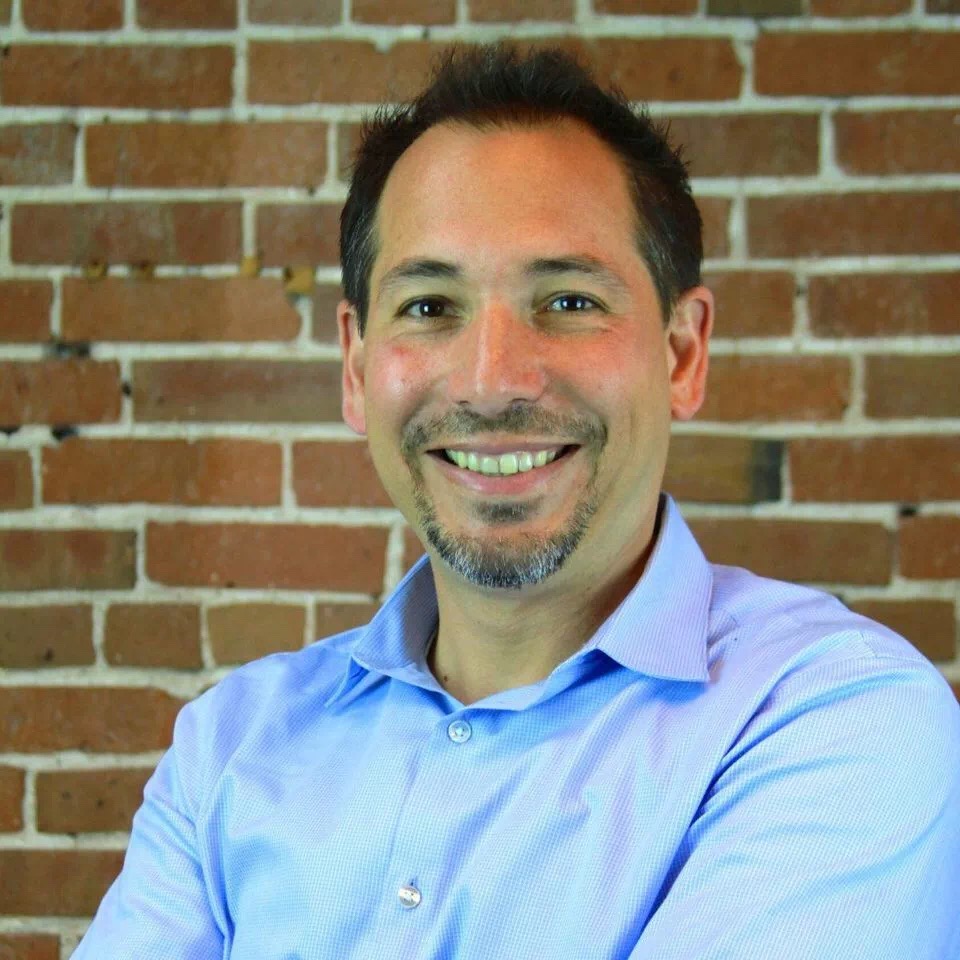 头条
头条
趁早断了使用用户数据的念头吧!你做好应对GDPR了吗?
文| 布莱克·摩根
编译| 李晓
来源| 牛透社
编者按:5月25日,《通用数据保护条例》(GDPR)在欧盟生效,这部新法案将影响任何一个拥有或使用欧盟地区个人数据的组织机构。
GDPR中规定,欧盟任何公司如违反该条例规定,都将面临最高2000万欧元或相当于其全球年销售额4%的罚款。咨询公司Capgemini的研究显示,85%的公司表示,他们还没有准备好应对新法律生效。
截止到本周一,部分受GDPR影响明显的欧盟数据营销公司因准备不足已经暂时拒绝欧盟用户访问或使用公司提供的数据服务,其中不乏不愿意触及GDPR红线的北美公司。
作为暂时未受到此次欧盟GDPR条例影响的中国企业绝不能够置身其外,事不关己高高挂起的态度只能暴露出企业的短视,那些未在该条例中受限的部分北美公司的前瞻性举动已经为中国企业敲响了警钟。
GDPR条例触及的边界范围非常宽广,“包括扩大了欧盟数据保护法律所覆盖的边界,从本地公司延伸到所有参与欧盟公民(包括英国)个人信息处理的所有外国公司。”
换句话说,如果你的公司数据库中包含欧盟公民的个人数据,那么你在使用该数据进行营销活动时都会受到该条例的规范,无论你是哪个国家的公司企业。
作为世界第二大经济体,无论经济上还是业务上,中国企业与欧盟国家有着千丝万缕的联系,认真对待GDPR带来的数据营销方式洗牌,做到未雨绸缪方为上策。
本文内容来自于Pegasystems CRM副总裁尼克尔森在播客上接受的采访,英文原文发布在5月25日的福布斯网站上。牛透社希望通过对此文的编辑,为各位CIO在数据营销方面能够提供一些实用的建议。
Pegasystems副总裁Jeff Nicholson(杰夫·尼克尔森)
欧洲正在发生巨大的变化,但大多数企业却还没有准备好。
欧盟的《通用数据保护条例》(即GDPR)将于5月25日生效(本文写于5月25日GDPR条例生效前——编者注),并且会带来个人数据信息权力转移,它将使用户能够比以往更多地掌控他们自己的个人数据。
用户数据一直被认为是商业资产。
但是,在GDPR之下,用户现在正在拿回自己个人信息的所有权,并将拥有更多的个人信息自主权。
他们现在可以选择自己的哪些个人信息允许被公司或机构拥有,也有权要求公司或商业机构从他们的数据库中删除属于自己的个人信息。
而违反用户意愿不遵守GDPR条例的公司将有被判处高达数千万美元罚款的风险。
但是,大多数企业没有为新立法做好准备。
根据Pegasystems的CRM副总裁杰夫·尼克尔森的说法,大多数公司意识到GDPR带来的影响时都已经为时已晚。
这使得各家公司争相拿出一个符合透明度准则的数据解决方案,同时也在为潜在的用户个人数据删除请求做出准备。
来自Pegasystems的一项新调查发现,82%的欧盟居民计划使用他们的新权限来查看、限制或删除公司企业已存档的个人信息。
这意味着公司企业不仅需要向用户提出数据收集请求,并分享他们收集到的每个用户的信息,而且如果用户要求清除属于个人的数据,这些公司企业则可能会大量丢失已有的用户数据库。
建议那些接受个人信息数据删除请求的公司以提升用户体验的方式来应对此事。
尼克尔森表示,这个问题的关键点不在于“如果这种情况出现”,而是在于“这种情况何时会出现”。
所有存有大量用户个人数据的公司都必须马上解决GDPR关于规范用户个人数据处理的要求,即使应对这种要求的解决方案的成本会很高。
GDPR不会法外施恩,所有品牌和公司都要谨记。
尼克尔森还表示,公司能做出的最好选择就是积极主动的配合GDPR条例的要求。个人数据的权力转移即将到来,那些无视此事或不做任何计划的公司都将会面临严重风险。
透明可靠的创建用户个人信息库流程将使企业品牌有机会顺势建立新的用户关系,并在接下来的数据营销市场上占据竞争优势。
问题的解决方式可以归结为信任度和透明度两方面。
用户希望他们信任的公司能够妥善处理和保管他们的个人信息,而不是将它们出售或不适当地使用。
在接下来的这个时代,能够重新获得用户信任的公司要比那些无视用户个人信息删除请求的公司更接近成功。
对于公司企业来说,用户选择删除个人信息数据的最大问题是它不能再被用于企业级的用户画像。
失去这些数据意味着公司企业不能再对用户的偏好和习惯进行分析,也不能像过去那样可以随时对数据库中的用户进行产品推荐和商业宣传。
在这种变化中受到最大冲击的行业当属零售业,他们在很大程度上依赖于根据用户个人信息数据对用户进行个性化推荐和营销。
GDPR条例的颁布是欧盟的一个巨大转变,它有可能扩展到包括美国在内的世界其他地区。
根据尼克尔森的说法,在用户数据权力转移的道路上,5月25日的实施日不是终点线,而是一条长长的起跑线。
对不断变化的消费环境积极应对并严格遵守GDPR条例的公司将在未来处于竞争优势顶端。
延伸阅读:
5月25日,欧盟颁布GDPR当日,华为云BU总裁郑叶来在朋友圈发表了针对此事的企业态度:
这周非常有意义:
《通用数据保护条例》(GDPR) 是迄今为止覆盖面最广的全球性数据隐私保护法规,将于今日, 2018 年 5 月 25 日在欧盟生效。
回想2015年在上海的HCC2015上,时任IT产品线总裁的我宣布:华为面向政府和企业提供云服务时,将“上不做应用,下不碰数据”,此番言论虽然获得了任总在内的公司高层的认可和确认,但也获得了公司内部“心声论坛”上广大员工的一致痛骂:不玩别人的数据,你还搞什么云计算!
那么我们回顾一下当时我们宣布的是什么?
华为面对政府和企业提供云服务时,标准的姿势应该是这样的:
1、我们不以技术的手段获取客户的运营数据;
2、永远不强迫客户进行数据交换,不将客户的数据进行商业变现;
3、华为开放自己的大数据处理能力,帮助客户处理数据,让客户的数据“慧”说话!
为推动社会的点滴进步感到自豪! 本周,我们将在贵阳的数博会上宣布我们开放的数据处理平台,为即将到来的人工智能浪潮提供一个智能化的底座!
背景介绍:Pegasystems公司
Pegasystems于1983年由美国人Alan Trefler 博士成立,Alan现任公司CEO兼董事会主席。
公司于1997年在美国纳斯达克上市,在100个科技股中成长率排名第8。Pegasystems目前在全球主要国家都建立了分支机构,并通过与合作伙伴的合作在全球提供解决方案。
作为规则驱动流程自动化市场的领导者,Pegasystems已经建立了分布在全球的各个行业的企业解决方案,它们包括零售、电力、制造、旅游和酒店业,以及先进的金融服务和医疗保健机构。
通过与领先的合作伙伴的合作,Pegasystems提供务实的解决方案,以提高公司的生产率、质量、灵活性和柔韧性。
编者后记:
腾讯推送了《关于欧盟数据保护通用条例的通知》,该通知主要内容为欧盟颁布DGPR后腾讯微信团队的态度和反应,用八个字可以概括:“坚决支持!立即执行!”
腾讯的应对措施符合文章中尼克尔森的“公司能做出的最好选择就是积极主动的配合GDPR条例的要求”观点,同时也为与数据营销相关的各家中国企业传递了一个明确的信息:是时候为GDPR准备预案了!
-
 头条
头条
HR部门:人工智能技术的第一线领域
文| Dr Jeremy Nunn
自古以来,哲学家和科学家们一直在探索人类智慧和思考的奥秘。就像我们在海洋和太空探索一样,我们在知识方面取得巨大进步之后,仍然存在一个萦绕不去的问题:
我们如何运用我们了解到的知识来帮助自己更好地生活和工作?
技术人员凑齐了以人类为原型的人工智能(AI)的最后一块拼图。
人工智能摆脱银幕并进入我们的日常生活,这项技术有望为人类各行各业带来革命性的变化。其中企业家将作为早期的人工智能行业推动者和采用者。
没有比人力资源(HR)部门更好的人机协作场所了。
通过人机协作及其对日常招聘,评估,入职和管理实践的影响,人力资源部门将迎来彻底的转变。
让我们从一开始就明确一件事:AI技术不会让HR经理和员工失去工作。
就像蒸汽机和计算机没有把我们引入过早的反乌托邦一样,AI技术承诺改变人力资源部门,而不是让它们变得多余。
毕竟,它只是许多人力资源专业人员在家中使用的技术的延伸,无论是Cortana,Alexa还是任何其他基于AI的设备。
因此,他们中的大多数人认为人工智能可能为人力资源部门的重要职责带来革命性变化,如招聘,绩效评估和教育,这是一个小小的惊喜。
人才招聘是人力资源部门的主要责任之一,但我们如何确保招聘到的人员是最终需要的“人才”?
假如你最终招到了一位说话流利,看起来很帅的员工,而他很难达到最初的承诺呢?
由于人力资源部门的人群纷杂(也就意味着易受扰乱),他们在这些招聘过程中无法抵抗人类的偏见。
人工智能技术有望通过依靠更多的大数据分析处理,而不是单独的观察来简化这一过程。
对于刚开始使用这项技术的人员来说,人工智能技术在筛选人员时,不受陈旧观念,以及申请人的种族,性别或国籍的影响。
人工智能软件可以设计相关的面试问题,完全忽视某人的背景,专注于他们某项工作的专业能力。
这些评估问题将以申请人早期的工作记录为基础,更重要的是,以他们申请的工作要求为基础。
用谷歌前任HR部门老板的话来说,将AI用于这种类型的自动化可以更快速地过滤出“极好的候选人”。
除了在候选人筛选期间摆脱人为偏见问题之外,人工智能还为人力资源部门提供了很多其他帮助,从而减轻了筛选候选人简历,社交媒体帐户,参考信函和其他来源的千兆字节数据的巨大负担。
这个过程是人力资源专业人员面临的最耗时的任务之一,他们往往面临为了及时完成工作而需要削减一些候选人的问题。
这无意中造成了公司招聘程序的缺陷,并可能把错误的人放在公司的错误位置。
最后,这也需要重复地耗费时间和昂贵的重新招聘程序。
人工智能可以使这些繁琐过程成为企业HR实践历史的一部分。
这归功于其强大的分析能力,使得人工智能可以同时处理大量候选人的大量数据。
如果可以的话,这些信息不必停留在简历或参考资料中,但也可以包括招聘后的绩效评估,这些评估为申请人的潜力提供了宝贵的见解。
人工智能处理这些任务所节省的时间可以在几天甚至几个月内进行衡量,人力资源专业人员可以将其用于实时访谈,入围和业绩分析。
AI通过协助新员工提供入职手续,再次释放HR部门资源。
这些新进人才经常淹没于人力资源部门,处理许多与薪资支付,假期,福利和一般权利有关的问题。
对HR专业人员来说,回答公司在宗教节日期间缺勤或未付奖金的政策等问题既重复又耗时,而人工智能可以使用日益智能的聊天机器人来“解救”这些人员。
他们可以很容易地编程,实时提供日常问题的答案,无论新员工或老员工的问题。
这些机器人可以作为自助服务平台,让人力资源人员能够专注于回应更加复杂和迫切的问题,那些更应该引起注意的问题。
最后,人工智能可以提供HR管理方面的协助,比如协助现有员工绩效评估的进行。
监控绩效会产生大量的各种数据和指标,人工智能可以对这些数据和指标进行梳理,以便人力资源经理能够快速访问有价值的系统化见解。
这些指标可以根据AI设计的每个员工的绩效目标进行衡量,也可以包括行为评估。
人工智能可以帮助人力资源人员为每位员工设置分级系统,并对设定的绩效目标进行定期自动化审查。
在企业界,人工智能最佳使用领域之一是人力资源部门,作为公司处理“人”的业务的第一线。
在人工智能领域,他们可以在其专业工作的各个阶段找到一个伟大的盟友,从早期入选人才和申请人筛选到后期上岗程序和绩效评估。
除了消除人力资源人员不必要的负担之外,人工智能可以帮助简化所有这些任务,并对每位候选人和员工的真实潜在业绩产生前所未有的见解。
所有这些都是在没有人为偏差和错误能力的限制的情况下完成的,这使得AI成为未来成熟的人力资源管理工具。
-
 头条
头条
国际人力资源平台ChronoBank宣布推出首个基于区块链技术的完整工作平台Laborx
来源| bitcoinist
世界领先的国际人力资源平台ChronoBank宣布推出LaborX--目前已成为大规模应用的首批区块链应用之一。
ChronoBank生态系统的新成员
ChronoBank宣布推出一个雄心勃勃的、旨在革新人力资源/招聘/金融行业的大型区块链项目LaborX--这是全球首个完整的基于区块链的工作平台。
ChronoBank的生态系统已经非常丰富,由Labour-Hour Coins和智能合约管理系统界面(ChronoMint)共同组成。
Labour-Hour Coins能够有效标记劳动力,同时消除通货膨胀。
而ChronoMint允许管理ETH,ERC20代币,BTC和LTC等虚拟货币。它还使用户能够创建自己的ERC20令牌。
LaborX现在是ChronoBank人力资源生态系统的重要组成部分,能够为求职者和公司提供安全有效地进行即时交易的保障。
准备以主流方式登场
最重要的是,如今LaborX是可以合法和大规模采用、基于blockchain的应用之一,得益于其人性化的设计与ChronoBank的多币种钱包(ChronoMint)和分布式交换(TIMEX)的集成。
凭借其一系列工具,LaborX计划尽快通过不变的信誉系统,智能合约和透明的令牌市场,来破坏和革新招聘市场。
同时LaborX声称它允许求职者增加小时费率以及避免支付延迟,同时允许公司选择更优秀的全球工作者,数字游牧人和加密货币爱好者。
在整个求职过程中,招聘双方都能够降低成本,LaborX平台本身只收取1%的费用 - 与已成为当今招聘平台收费标准的5-20%相差甚远。
ChronoBank的首席执行官Sergei Sergienko说:我们的业界领先团队去年一直致力于打造世界上最完整的区块链式人力资源生态系统。 LaborX仅仅是团队劳动成果之一,并且今天为它的大规模采用做好了准备。
就我们而言,任何人都可以在早期阶段采纳和使用我们的项目。我们预计有1,000家公司,100,000名用户将在年底前注册LaborX,他们通过LaborX每月可节省大约4500万美元的开销。
LaborX今天已经投入使用。
Edway Training和DGTek正在使用它。预计未来几个月将有更多公司使用该技术。
行业领先的功能
从客观的角度来看,LaborX的优势在于其特色 - 其中许多特色迄今在人力资源行业尚未见到。
除了大幅降低费用外,LaborX还拥有一个专有信誉系统,该系统将数十个来自不可变账本上的候选人的数据点考虑在内。
通俗地说,这可以让公司相信他们雇用的候选人,并通过消除证明不可靠的筛选过程来节省时间和金钱。
LaborX还可以标记工作时间,允许个人以最高的市场价格销售自己的时间,并决定他们每周希望工作多少小时 - 为工作和娱乐之间的完美平衡打开大门。
求职者也可以通过加密货币进行支付,这意味着那些以前无法进入招聘市场的人 - 比如那些没有银行账户的人 - 现在可以为他们的服务寻求工作和支付。由于智能合同和内置的纠纷解决方案,所以支付也得到保证。支付是立即收到钱包,而不是转移到银行账户。
那些加密货币的新手不需要向第三方交易所注册,而可以使用LaborX的内置交易所和钱包。付款由稳定的LH代币处理,这消除了加密货币臭名昭着的波动。
最后,LaborX建立了简洁的、用户友好型的网站和app界面。用户不需要任何专业、技术上的知识便可以使用。
随着该平台已经准备好大规模采用,当今业界很少有其他基于区块链的项目与LaborX一样令人兴奋。
以上内容由HRTechChina AI编译完成,仅供参考
-
 头条
头条
名企都在用的5种HR数据分析
文| bernard marr
HR数据提供了一种方式,使我们可以做出更好的与人相关的决策,更深入地了解员工的感受,并提高绩效。
让我们看看人力资源团队通过数据分析增加价值的一些出于意料的方式。
寻找令人兴奋的新招聘渠道
我最喜欢的例子之一来自沃尔玛对数据分析师的创造性搜索。他们不是通过传统渠道进行广告宣传,而是在Kaggle上提出挑战。
Kaggle是一个众包的分析竞赛平台,“扶手椅数据科学家”将其技能应用于公司提交的任何分析问题。那些在沃尔玛的数据挑战中表现出色的人在该公司获得了一份工作。
根据沃尔玛技术部门的高级招聘人员Mandar Thakur表示,由于这次挑战,有几个人被聘请加入沃尔玛分析团队,其中包括沃尔玛技术部。如果根据他们的简历,招聘部门则根本不会考虑采用他们。
在赛车运动的世界里,日产也通过一个不寻常的渠道招募:赛车视频游戏!日产与索尼合作创建GT Academy,这是一项全球性年度比赛,旨在发现最佳游戏车手,并将其变为真实的赛车手。每年都有数十万的人希望参加比赛。
所有在过去几年中脱颖而出的获胜者仍然在比赛,这证明了日产的这种招聘渠道是有益的。
人力资源团队的外包:不要等待最好的人才主动敲门。找出你理想的人才留在哪里,并将你的招聘工作集中在那里。
参与和激励员工
行为分析公司Humanyze提供的电子徽章可以捕捉员工对话中的信息,包括对话的长度,涉及的语气,人们打断的频率,表达移情的程度等等。
一家大银行利用这项技术注意到,其表现最出色的呼叫中心工作人员是那些一起休息并集体放风的人。
基于这些知识,银行实施了群体休息政策。结果?员工的绩效提高了23%,压力水平下降了19%。
此外,IBM使用情绪分析来收集员工帖子在其内部社交网络平台上的见解。
例如,当IBM正在检修其绩效审核系统时,该公司转向内部网络,要求员工对新审核系统的想法提出反馈意见。他们收到了数以万计的回应。
使用Social Pulse文本分析软件,IBM表现出一种普遍的担忧:员工不喜欢他们的日常表现被曲线分级。
得益于数据和分析,公司能够及时采取行动,并在绩效评估中对此方法进行折扣。
提高员工的安全和福利
钢铁生产商North Star BlueScope Steel一直与IBM合作设计一项安全计划,该计划将IBM Watson的认知计算能力和传感器整合到腕带和头盔中。
这个名为IBM Employee Wellness and Safety Solution的项目实时向工人和主管提供安全警报。例如,如果技术检测到工人没有移动,并且他们的心率和高温增加,这可能意味着他们正在遭受劳累或者甚至是极度高温的压力。
在这种情况下,可以提醒主管,或者建议员工休息一下。
在另一个例子中,澳大利亚Seeing Machines公司开发了采矿卡车技术,跟踪驾驶员的眼睛,以便发现驾驶员的疲劳。
该系统使用摄像头,GPS和加速计来跟踪眼睛和眼睑的运动,例如司机眨眼多久,眨眼持续多久以及眼睑移动速度有多慢 - 即使司机穿着它也可以做到这一切墨镜。当驾驶员闭上眼睛的时间超过1.6秒时,卡车内会发出警报 - 座椅内部产生噪音和振动。
然后,如果再次触发警报,则会通知调度员或主管,以便他们可以通过无线电与司机联系。
人力资源团队的收获:技术,特别是传感器,已经帮助工作场所更安全了很长一段时间 - 想想烟雾报警器,安全和进入系统等 。
但现在,由于大数据和分析,公司能够将员工安全提升到一个全新的水平。
使学习和发展更有效
随着在线学习的兴起,针对个人学习者,企业学习和发展日益变得个性化。在数据和分析的推动下,“适应性”学习技术允许对课程细分,以及对活动和试题进行个性化定制,以适应学习者的偏好,学习速度和最佳学习方式。
个人在线自学也可以说比将员工从工作中抽出一天或一周时间带到昂贵的培训课程上更具成本效益。重要的是,像这样的自我导向学习有助于将持续发展融入员工日常生活中。
达能的在线达能校园2.0就是其中一个例子。这家食品巨头创建了一个用户友好的在线平台,员工可以通过这个平台促进他们的发展并与其他员工分享最佳实践和知识。
人力资源团队的外包:
这一数据驱动的人力资源领域可能不如其他领域发达。但即使只是对目前学校数字化转型的一瞥,大学和高校也指出数据如何以令人兴奋的新方式促进企业学习和发展。
驾驶表现......不疏远人
UPS已经将性能管理中的数据和分析应用到了一个全新的水平。例如,司机携带多年的手持式计算机(你签收的那些智能储物柜告诉你收到了你的包裹)实际上是一种复杂的设备,可以帮助司机做出更好的决定。
例如,哪种订单能够以最高效率递送包裹路线。此外,UPS卡车配备了200多个传感器,用于收集数据,包括驾驶员是否系安全带,驾驶员有多少次需要倒车或掉头。
通过监测驾驶员并在需要时向他们提供反馈和培训,UPS每年减少850万加仑燃料和8500万英里。另外,司机现在每天平均停靠120次。这个数字以前不到100--这意味着使用相同卡车的相同司机现在可以提供比以前更多的包裹。
你会认为如此紧密的监控员工可能会引起员工之间的冲突。但增强的性能意味着该公司可以向其司机支付业内最高的工资,这无疑有助于支持员工购买数据驱动的绩效。该公司还采取了其他措施,以确保他们不会面临司机的反弹;
例如,根据驾驶员合同的条款,UPS不能在没有通知驾驶员他们正在收集什么的情况下收集数据。他们也不能仅仅根据数据告诉他们的信息来对驾驶员进行管理。
人力资源团队的外包:
数据驱动的人力资源可以让企业摆脱传统的,耗时的绩效管理方法,例如年度绩效评估(一般对管理人员和员工都感到恐惧)。
现在,我们可以更经常地(甚至实时)更好地监控实际绩效,并以更具建设性,持续和一致的方式向员工提供反馈意见。
 扫一扫 加微信
hrtechchina
扫一扫 加微信
hrtechchina
 头条
头条
 头条
头条
 头条
头条
 头条
头条
 头条
头条
 头条
头条
 头条
头条
 头条
头条
 头条
头条
 头条
头条

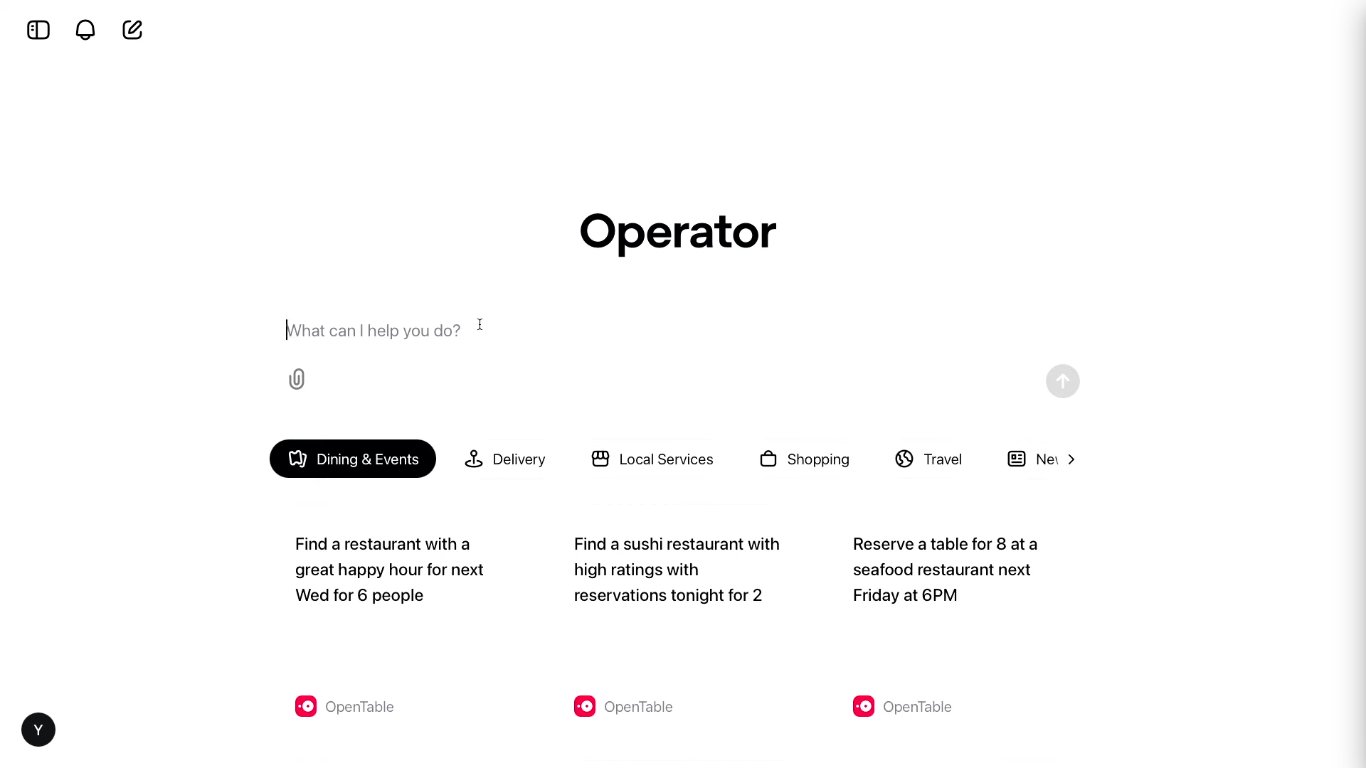
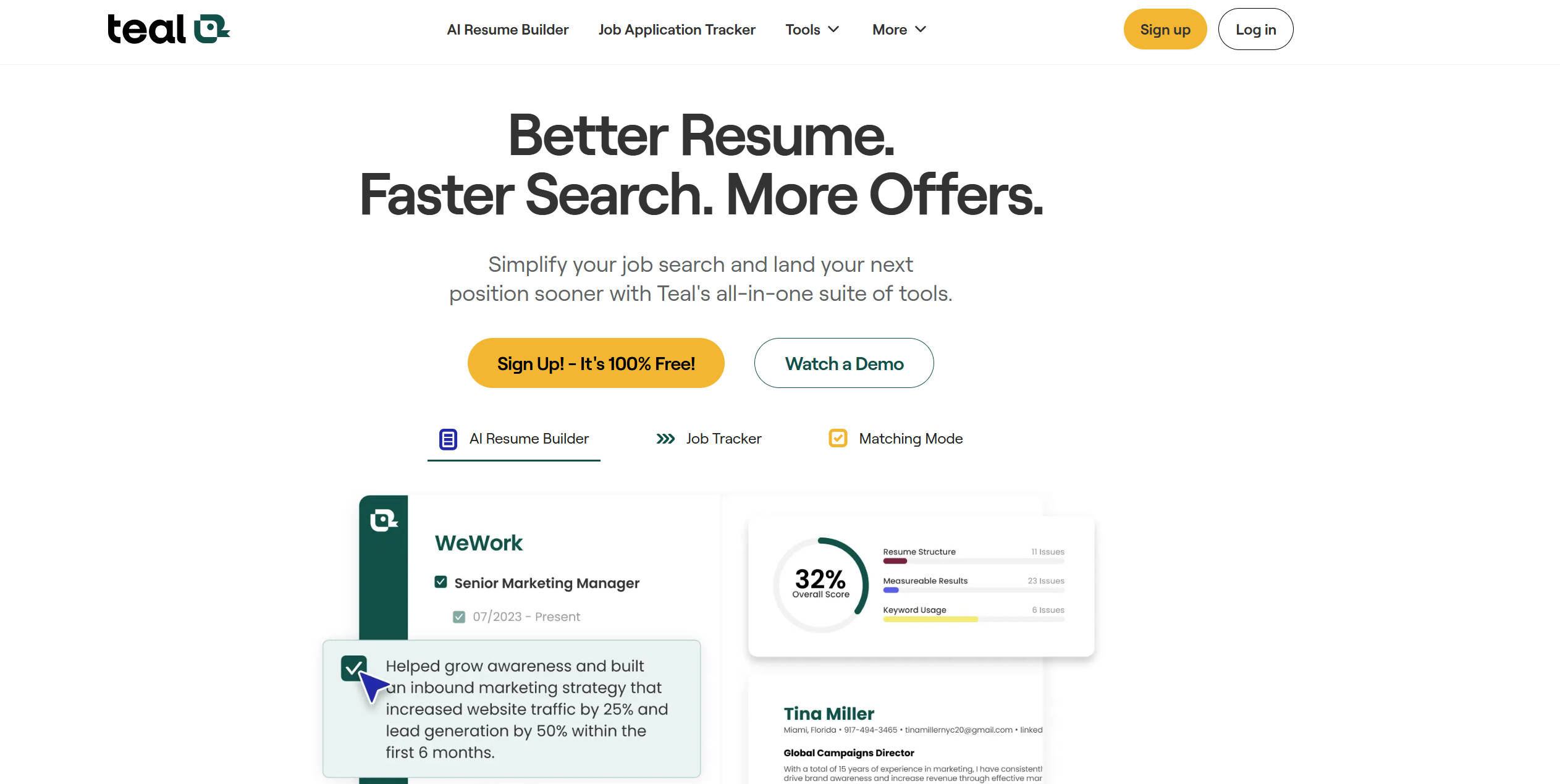
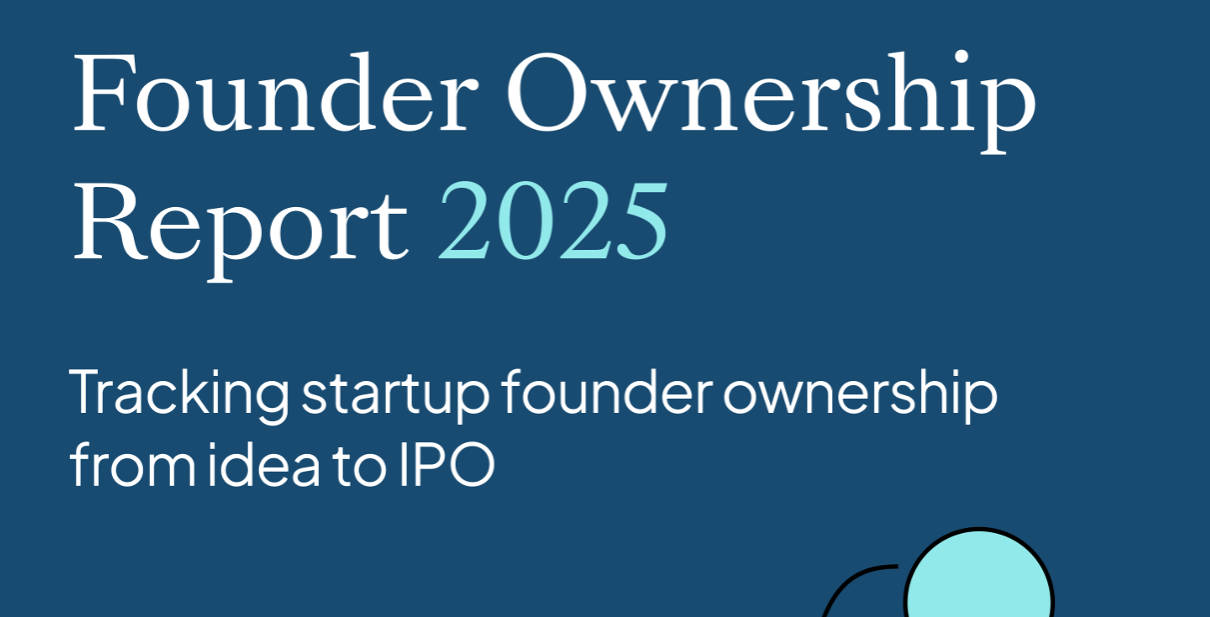

 扫一扫 加微信
hrtechchina
扫一扫 加微信
hrtechchina

